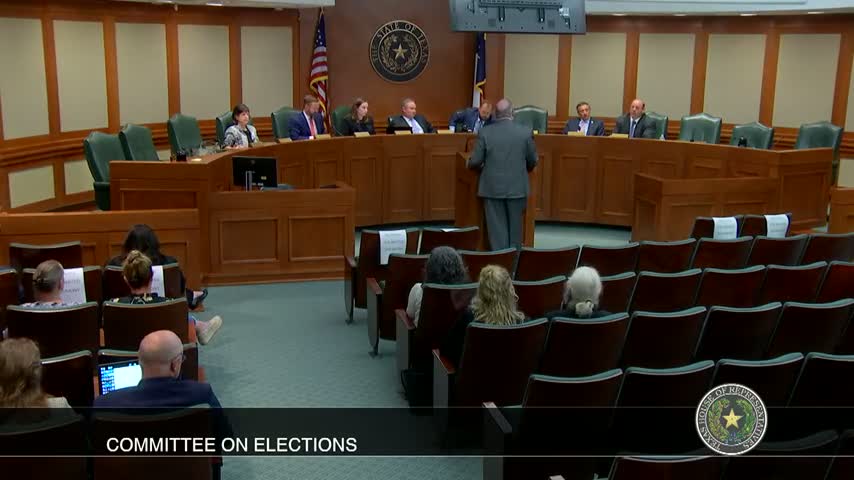Voter Privacy at Risk Amid Low Turnout Concerns
June 12, 2024 | Committee on Elections, HOUSE OF REPRESENTATIVES, Legislative, Texas

This article was created by AI summarizing key points discussed. AI makes mistakes, so for full details and context, please refer to the video of the full meeting. Please report any errors so we can fix them. Report an error »

In a recent government meeting, officials discussed concerns surrounding voter anonymity and the potential risks associated with low voter turnout in specific precincts. The dialogue highlighted a significant issue: when only a small number of voters participate in a polling location, it becomes easier to identify individual votes, raising questions about the integrity of voter privacy.
One official noted that this problem has persisted since the introduction of paper ballots, emphasizing that monitoring voter entry and tracking ballot images can lead to the identification of voters' choices. A recent case was cited where a single voter from a precinct cast a ballot, making it straightforward to associate that vote with the individual based on the time and date of their visit.
To mitigate these risks, officials suggested that states could aggregate results from low-turnout precincts with those from others, thereby obscuring individual voter choices. The discussion underscored the importance of increasing voter turnout as a means to enhance anonymity, with one official humorously suggesting that encouraging more voters to participate could alleviate the issue.
While the immediate outlook for the upcoming elections appears stable, officials acknowledged the need for long-term solutions. They praised the efforts of the Secretary of State and the Attorney General in enhancing voter privacy protections and expressed confidence in the rigorous testing and certification processes for voting systems in Texas.
A key recommendation emerged from the meeting: any precinct with fewer than 20 voters should have its results aggregated with others to minimize the risk of vote identification. This figure was proposed as a threshold to ensure voter anonymity, with officials agreeing that a higher number of voters would significantly reduce the chances of individual votes being discerned.
The meeting concluded with a commitment to further explore technological and procedural improvements to safeguard voter privacy, as officials recognized the ongoing discussions surrounding the integrity of voting systems and the need for transparency in addressing public concerns.
One official noted that this problem has persisted since the introduction of paper ballots, emphasizing that monitoring voter entry and tracking ballot images can lead to the identification of voters' choices. A recent case was cited where a single voter from a precinct cast a ballot, making it straightforward to associate that vote with the individual based on the time and date of their visit.
To mitigate these risks, officials suggested that states could aggregate results from low-turnout precincts with those from others, thereby obscuring individual voter choices. The discussion underscored the importance of increasing voter turnout as a means to enhance anonymity, with one official humorously suggesting that encouraging more voters to participate could alleviate the issue.
While the immediate outlook for the upcoming elections appears stable, officials acknowledged the need for long-term solutions. They praised the efforts of the Secretary of State and the Attorney General in enhancing voter privacy protections and expressed confidence in the rigorous testing and certification processes for voting systems in Texas.
A key recommendation emerged from the meeting: any precinct with fewer than 20 voters should have its results aggregated with others to minimize the risk of vote identification. This figure was proposed as a threshold to ensure voter anonymity, with officials agreeing that a higher number of voters would significantly reduce the chances of individual votes being discerned.
The meeting concluded with a commitment to further explore technological and procedural improvements to safeguard voter privacy, as officials recognized the ongoing discussions surrounding the integrity of voting systems and the need for transparency in addressing public concerns.
View full meeting
This article is based on a recent meeting—watch the full video and explore the complete transcript for deeper insights into the discussion.
View full meeting
